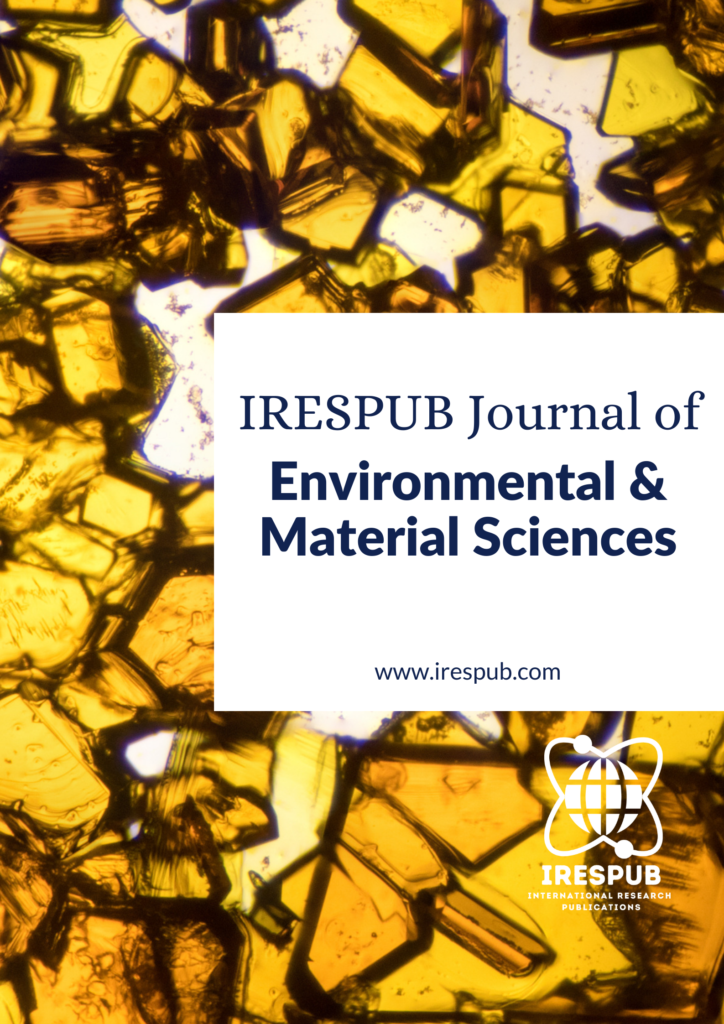
Year Launched: 2021
Journal Menu
- Scope & Research Areas
- Instructions for Authors
- Article Processing Charge
Journal List
- Natural & Applied Sciences
- Life Sciences
- Business Management
- Education & Literature
- Humanities & Cultural Studies
- Medical & Dental Sciences
- Engineering & Computer Sciences
- Agriculture, Food & Nutrition
- Environmental & Material Sciences
- Wellness & Lifestyle Management
- Arts & Ideas
- Law, Policy & Religion
A Study of Quality Related Project Control Measures on Building Construction Projects in Delta State
Volume 3, Issue 2, Mar-Apr 2024 | Page 15-23 | PDF (436 KB) | Pub. Date: Apr 29, 2024
Author(s)
Ukwumonun Etubi1, Iyamu Osafanmen Victor2 & Elamah Daniel3 ; 1Department of Building, Faculty of Environmental science, Nnamdi Azikiwe University, Awka; 2Federal College of Education, (Technical), Asaba, Delta State; 3Department of Building Technology Auchi Polytechnic, Auchi, Edo state
Abstract
This paper investigated quality-related project control measures on building construction projects in Delta State. Three research questions guided the study while three null hypotheses were formulated. The design to be adopted for this study is a descriptive survey. The population of this study comprised 157 construction professionals in relevant professional bodies in Delta State. The required sample size from this sample frame was 157, which represents the entire population of each group of professional bodies stated above. Data for this study were collected by means of a structured questionnaire titled “Questionnaire on Quality-Related Project Control Measures on Building Construction Project” (QQRPCMBCP) developed by the researcher. The questionnaire was subjected to face validation. Cronbach Alpha method was used to test the internal consistency of the instrument and an overall co-efficient of 0.78 was obtained. Descriptive statistics of the mean score and standard deviation were used to analyze the data to answer the research questions while a one-sample t-test was used to determine the significant difference between the mean scores. The SPSS (version 24) will be used to analyze the data. The paper found that construction professionals agreed on the quality project control measures for planning, monitoring, and reporting on building construction projects in Delta State. Based on the findings, it was recommended amongst others that construction professionals in Delta State should formalize and standardize project control measures across the construction industry to ensure consistency and uniformity in planning, monitoring, and reporting practices.
Keywords
Project; project control measures; building; construction projects
Cite this paper
Etubi, U., Victor, I. O., Daniel, E. (2024), A Study of Quality Related Project Control Measures on Building Construction Projects in Delta State, IRESPUB Journal of Environmental & Material Sciences. Volume 3, Issue 2, Mar – Apr 2024, Page 15-23
References
[1] Akindele, E. O., & Adepoju, A. O. (2020). Effect of project control practices on the performance of building construction firms in Lagos State, Nigeria. African Journal of Science Policy and Innovation Management, 1, 10 – 26.
[2] Arijeloye, B.T. & Akinradewo, F. O. (2016). Assessment of materials management on building projects in Ondo State, Nigeria. World Scientific News, 55, 68-185.
[3] Arowolo, T. A., Kolawole, O. A., Adewale, A. K., & Adeyemi, O. M. (2019). Factors affecting quality control in building construction. International Journal of Advances in Scientific Research and Engineering, 5(11), 171 – 176.
[4] Ibironke, O. T., & Elamah, D. (2021). Factors affecting time, cost and quality management construction projects. FUTY Journal of the Environment, 6(1), 1 – 9.
[5] Kotb, M. H., Atwa, M. S., & Elwan, A. S. (2016). Impact of effective project control plans. PM World Journals, 5(12):1-10. Available@ www.pmworldjournal.net.
[6] Nwachukwu, C. C. & Emoh, F. I. (2018). Building construction project management success as a critical issue in real estate development and investment, American Journal of Social and Management Sciences, 2(1), 56 – 75.
[7] Ogunde, A. O., Olaolu, O., Afolabi, A., Owolabi, J., & Ojelabi, R. (2017). Challenges confronting construction project management system for sustainable construction in developing countries: Professionals perspectives (A case study of Nigeria). Journal of Building Performance, 8(1), 1 – 11.
[8] Okoli, E. (2022). Implementation of project monitoring protocols in Delta State: A case study analysis. Construction Research Journal, 15(3), 112-125.
[9] Olateju, O. I., Abdul-Azeez, I. A., & Alamutu, S. A. (2020). Project management practice in Nigerian public sector: An empirical study, Australian Journal of Business and Management, 1(8), 1 – 7.
[10] Onyeka, E. (2022). Implementation of reporting protocols in building construction projects: A case study analysis in Anambra State. Construction Research Journal, 15(3), 112-125.
[11] Ozoemena, M. O., & Udobi, A. (2019). An analysis of factors constraining quality management of building construction projects in Awka South Local Government Area of Anambra State. Iconic Research and Engineering Journals, 2(12), 41 – 50.
[12] Patunola-Ajayi, B. J. (2021). Marketing of project management services in the construction industry in Nigeria. A Master of Project Management (MPM) Thesis Submitted to the Department of Building, University of Lagos, Akoka, Yaba, Lagos, Nigeria.
[13] Pinto, J. K., & Slevin, D. P. (2017) Critical success factors in successful project implementation. IEEE Transactions on Engineering Management, 2(1), 90 – 99.
[14] Rupen, S. (2021). Project control techniques and tips. Bright hub project management available at http://brighthubpm.com/ monitoring- project/103492-project-control-techniques-and-tips/
[15] Ugwu, O.O. & Attah, I. C. (2016). An appraisal of construction management practice in Nigeria. Nigerian Journal of Technology, 35(4), 754-760. https://doi.org/10.4314/njt.v35i4.9
[16] Usman, N. D., Kamau, P. K., & Mireri, C. (2014). The impact of initial phase principles on project performance within the building industry in Abuja, Nigeria. American International Journal of Contemporary Research, 4(7):127-132
[17] Windapo, A. O., Rotimi, J. O. (2018). Contemporary issues in building collapse and its implications for sustainable development. Buildings, 2, 283-299.

